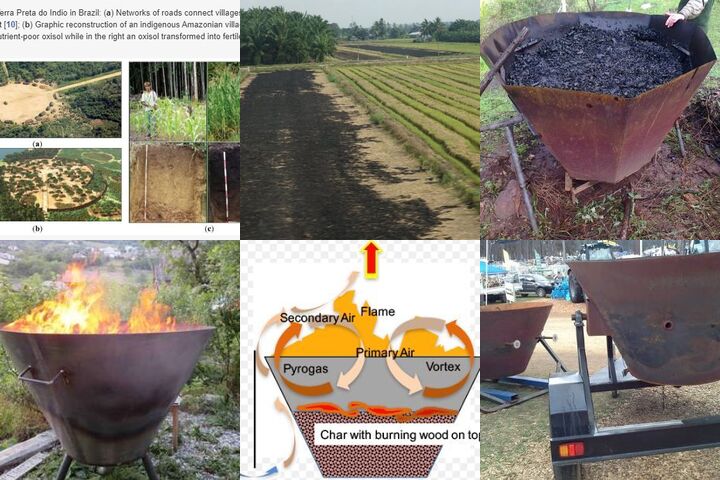Malaysian Rice Farm BioChar
The Problem
In Malaysia rice straw is normally burned in the fields after the harvest. It is quick, easy, and cheap to do. However, open burning likes this converts the straw to ash allowing the remaining nutrients to wash or blow away. Soils gradually degrade, demanding ever more expensive artificial fertilizers. The smoke also contributes to the regional haze, which together with forest fires is a major problem in South East Asia. One of the attached photos illustrates the burning of rice straw in an open field. Malaysia produces 1.7 million tonnes of rice per year and the rice straw burning contributes about 2 million tonnes of carbon dioxide per year. One of the state governments, with the help of WWF Malaysia, wishes to find low cost ways to improve rice yields. We have been discussing carbon sequestration methods with WWF and believe we can help improve soil quality, crop yields and cut the smoke pollution at the same time. There is interest from farmers in converting the straw to biochar in the rice growing areas of Malaysia, and the straw can be converted to biochar by burning it slowly in a steel cone using an already very well-developed solution. However, there is always great reluctance to make even the most modest investment to trial the idea.
Our Proposal
Make biochar from the straw, directly in the fields, using very low-cost equipment. This greatly improves the quality & yield of the soil as well as storing large amounts of stable carbon as biochar in the soil itself. The charring process captures more of the nutrients, which do not wash or blow away, and smoke is greatly reduced. Biochar is very porous and so it traps significant amounts of water, holding more of the fertiliser for longer, so that less goes to waste so less fertiliser is purchased and fertiliser runoff is greatly reduced, helping to improve river and ocean health and reduce seasonal flooding. In Malaysia up to 1 million tonnes per year of carbon could be sequestered into the soil. We propose to provide a demonstrator unit for farmers to make biochar for themselves and discover both how easy it is and how well it improves their crops, reduces their fertiliser costs and improves the local air quality. The $3,500 grant from CXL will allow us to buy or construct a unit locally to provide to a local farming community to learn how and why to convert straw into biochar. The biochar cone shown in the pictures and YouTube video is made by KonTiki. Once demonstrated and proven to be very beneficial, we can then arrange for local manufacture of more units that WWF and the regional government will want to support, promote and likely fund in order to reduce local subsidies and deliver the benefits to society.
We Assume that...
A biochar cone can be used to convert rice straw into usable biochar (all sorts of bio-materials are already converted to biochar).
A biochar cone can be built locally at relatively low cost (we know that the unit is a simple steel heavy-walled cone).
That our existing contacts in WWF Malaysia and the department of agriculture who have expressed interest in biochar would be able to find us a trial site.
That local contacts can find and engage a farming community that is interested in hosting a trial.
Constraints to Overcome
There is interest from farmers in converting rice straw to biochar. However, there is always great reluctance to make even the most modest investment to trial the idea as rice growing is not a highly profitable business. By providing a biochar, supported by WWF and the regional government it will be possible to engage the local communities, allowing them to watch the process, try the system out, and prove the value of the solution to themselves & their communities in their own fields. Providing the unit also allows them to see just how simple the technology is, and we can even show them how they could build their own units. It is equally important that the solution is low-tech and can be largely within their own control.
Current Work
We will build or buy a biochar cone and connect with a farm community willing to do a trial. With the community, we will run a series of trials to better understand this particular biochar challenge and optimise the approach.
Current Needs
We need to connect with the biochar community around the world to learn in greater detail the work that has already been done and how to optimise this for our selected application - rice straw. With the help of WWF, we will also connect with palm oil plantations in Malaysia, who also do not currently make or use biochar, to explore opportunities to with them - we have been talking with one of the larger Malaysian plantations regarding other issues and they are very interested in biochar opportunities. More than 20 million tonnes/year of palm oil is produced. If a matching quantity of biochar could be made, this would provide a very significant carbon sequestration route.
